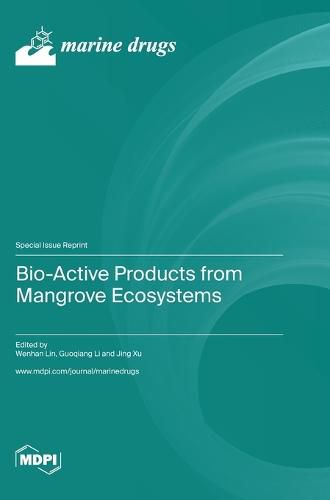Readings Newsletter
Become a Readings Member to make your shopping experience even easier.
Sign in or sign up for free!
You’re not far away from qualifying for FREE standard shipping within Australia
You’ve qualified for FREE standard shipping within Australia
The cart is loading…






This title is printed to order. This book may have been self-published. If so, we cannot guarantee the quality of the content. In the main most books will have gone through the editing process however some may not. We therefore suggest that you be aware of this before ordering this book. If in doubt check either the author or publisher’s details as we are unable to accept any returns unless they are faulty. Please contact us if you have any questions.
Mangrove communities represent a coastal habitat located in the intertidal zone or brackish water of tropical and subtropical coastal areas, between 5 degreesN and 5 degreesS latitudes, spanning over 118 countries. The special ecological conditions of mangroves include high salinity, nutrient limitation, tidal gradients, high temperatures, excessively high light, and muddy anaerobic or sandy soil, which lead to various morphological and physiological adaptations of inhabiting species and act as an effective selector for the metabolic pathway via the generation of unique functional metabolites with highly unique chemical scaffolds and pharmaceutical application potential. In recent decades, numerous metabolites with uncommon structures and efficacious bioactivities have been discovered in mangrove-derived microorganisms, along with mangrove plants. For this reason, mangrove ecosystems have taken the limelight as an attractive biodiversity hotspot, attracting significant attention from organic chemists and pharmacologists. Additionally, many unique and novel chemical structures with a wide range of structural classes have suggested various biosynthetic origins containing novel functional genes and corresponding enzymes with unique catalytic functions. In this Special Issue, we welcome articles describing recent studies and pertinent reviews focusing on the latest and most important developments in bioactive product discovery from mangrove ecosystems and correlating structures with chemical synthesis, biosynthesis, genomic and metabolomics approaches, biological activities, and pharmaceutical mechanisms. We are now in the process of putting together a group of top researchers whose work we would like to feature in this collection, and we would like you to participate.
$9.00 standard shipping within Australia
FREE standard shipping within Australia for orders over $100.00
Express & International shipping calculated at checkout
This title is printed to order. This book may have been self-published. If so, we cannot guarantee the quality of the content. In the main most books will have gone through the editing process however some may not. We therefore suggest that you be aware of this before ordering this book. If in doubt check either the author or publisher’s details as we are unable to accept any returns unless they are faulty. Please contact us if you have any questions.
Mangrove communities represent a coastal habitat located in the intertidal zone or brackish water of tropical and subtropical coastal areas, between 5 degreesN and 5 degreesS latitudes, spanning over 118 countries. The special ecological conditions of mangroves include high salinity, nutrient limitation, tidal gradients, high temperatures, excessively high light, and muddy anaerobic or sandy soil, which lead to various morphological and physiological adaptations of inhabiting species and act as an effective selector for the metabolic pathway via the generation of unique functional metabolites with highly unique chemical scaffolds and pharmaceutical application potential. In recent decades, numerous metabolites with uncommon structures and efficacious bioactivities have been discovered in mangrove-derived microorganisms, along with mangrove plants. For this reason, mangrove ecosystems have taken the limelight as an attractive biodiversity hotspot, attracting significant attention from organic chemists and pharmacologists. Additionally, many unique and novel chemical structures with a wide range of structural classes have suggested various biosynthetic origins containing novel functional genes and corresponding enzymes with unique catalytic functions. In this Special Issue, we welcome articles describing recent studies and pertinent reviews focusing on the latest and most important developments in bioactive product discovery from mangrove ecosystems and correlating structures with chemical synthesis, biosynthesis, genomic and metabolomics approaches, biological activities, and pharmaceutical mechanisms. We are now in the process of putting together a group of top researchers whose work we would like to feature in this collection, and we would like you to participate.